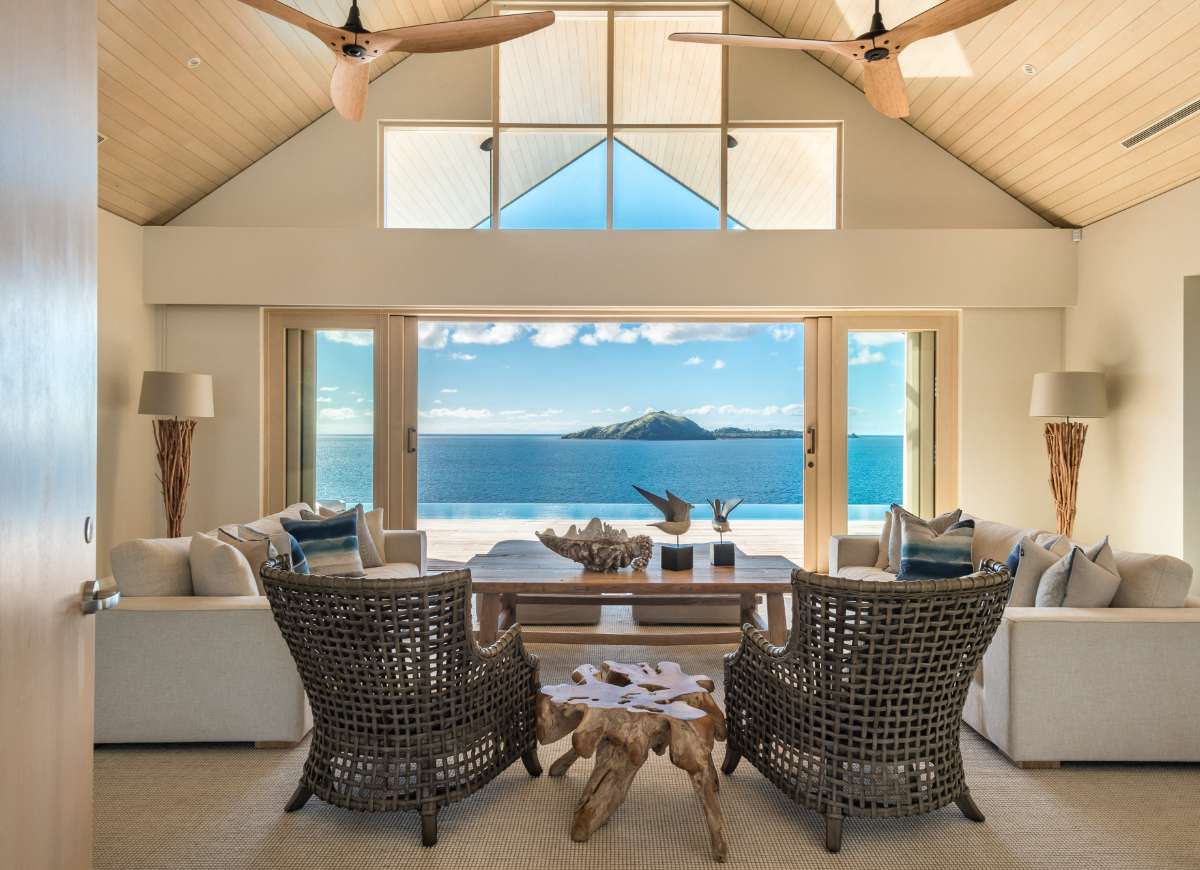
Step inside the Fijian resorts that are not only supremely stylish, but have a strong commitment to protecting the archipelago’s natural assets.

In Partnership with

Step inside the Fijian resorts that are not only supremely stylish, but have a strong commitment to protecting the archipelago’s natural assets.
From its dreamy opaline lagoons to its lush rainforest, Fiji has some of the most postcard-worthy natural assets on the planet. Small wonder that country’s savvy luxury hotel and resort operators are dedicated to protecting the bounty that attracts sybarites and adventure seekers in equal measure. Here are just a few of the initiatives that set the Pacific Island archipelago’s hospitality leaders at the top of the sustainability chain.
Six Senses Fiji
From the Seychelles to Switzerland, the Six Senses group is a pioneer when it comes to crafting hotels and resorts that unite style and sustainability. The Six Senses Fiji doesn’t skip a beat, implementing numerous measures to ensure the property (and its guests) tread lightly on the environment. In addition to employing state-of-the-art tech to conserve energy and rainwater, the resort has one of the largest off-grid solar installations in the Southern Hemisphere – in fact, it is entirely powered by the sun. Chefs grow organic produce that stars in restaurant menus, honey and honeycomb are sourced from the resort’s protected beehive area, and eggs come from the adorably named ‘Cluckingham Palace’: a sanctuary for more than 100 chickens.
Guests are encouraged to get involved and learn more via the on-sire Earth Lab, where they can take a deep dive into the natural world then experiment by turning waste into wonderful products, including jewellery, oils, soaps and more.
Likuliku Lagoon Resort
This gorgeous adults-only resort, with its villas stilted over the ocean, recognises that it is blessed to be operating in such a pristine environment. It also recognises that it’s fragile, and goes to great lengths to guarantee it will around for future generations. That includes ensuring that locals are part of the conservation conversation – there’s ongoing training, education and advocacy for resort staff and members of the community when it comes to caring for the environment, with employees encouraged to share this knowledge with guests, creating wider environmental advocates in the process.
Among the projects the resort actively supports are turtle conservation initiatives, coral gardening, giant clam and mangrove restoration, and reef health assessments. The waters around the property have been declared a Marine Protected Area, which means that any form of fishing or coral collecting is forbidden. And on land, staff are employed to work with the Department of Forestry restoring the island’s tropical dry forest, which is home to a series of endangered species. This commitment has seen the rediscovery of the Malolo Island crested iguanas, which were considered extinct here until 2010. This is all in addition to the elimination of single-use plastics, the application of alternative and sustainable energy sources, and the use of a water desalination plant, among many other measures.
Turtle Island
This forward-thinking (and exceptionally pretty) resort in the Yasawas chain of Fijian islands is a leader in the eco-movement, having been named ‘Green Hotelier of the Year’ on numerous occasions for its commitment to conserving the archipelago. Energy is harnessed from the sun, the island it calls home has been reforested, food miles are eliminated by growing produce in organic on-site gardens, and there’s a massive investment in protecting the turtles that the island was named after.
Sea turtles build their fragile nests on the island’s shores, and while once they were hunted, today their numbers are thriving. The resort’s Turtle Conservation Program is managed in partnership with the World Wildlife Fund, and it includes working with local fishermen to rehabilitate injured turtles, while sharing knowledge on turtle conservation with guests.
Kokomo Island
When esteemed Australian property developer Lang Walker AO first visited the Pacific Isle that would become Kokomo Private Island Resort, he thought it was the most beautiful place on Earth. He decided to build a resort that matched the natural assets – and then implemented a strict policy to ensure that the environment never changed. This began with the design and development of the property: hardwood cinnamon trees sourced from nearby Mago Island were repurposed as furniture; locally sourced mahogany was used in the decks, windows, doors and louvres; and plantation pines were used in the roof trusses. There’s a state-of-the-art seawater desalination plant on site, and a strong commitment to treating waste products and investing in on-island recycling programs.
Thanks to the extensive organic farm, food miles are kept to a minimum – guests are invited to join horticulturalists touring the gardens, learning about how they grow everything from lettuce and tomatoes to vanilla. There are also free-range eggs and a beehive, and a program to forage seaweed and sea herbs. Because the resort recognises that the ocean is its greatest asset, it invests heavily in programs including manta ray conservation, coral planting, debris clean-up and creating clam nurseries.
Tavarua Island
This private, heart-shaped island is like a cocoon of comfort, and adrenaline. But that doesn’t come at the expense of the environment – no corners are cut when it comes to the land and reefs that surround. The resort is one of the most popular surf spots in Fiji, and has been recognised as an official Mission Blue Hope Spot, an acknowledgement of its efforts to protect and rehabilitate the archipelago’s fragile environments. This equates to a broad range of sustainability efforts, including a cutting-edge water treatment and rain catchment system, comprehensive energy policies, and a commitment to ensure all solid waste is avoided, reused, recycled and safely disposed of.
On World Oceans Day, the resort also welcomed 500 baby clams to the island, with the hope of reproducing them and then reintroducing them to the wild to enhance the reef system that surrounds.
Latest Articles
Don't miss the latest from Luxury Travel
